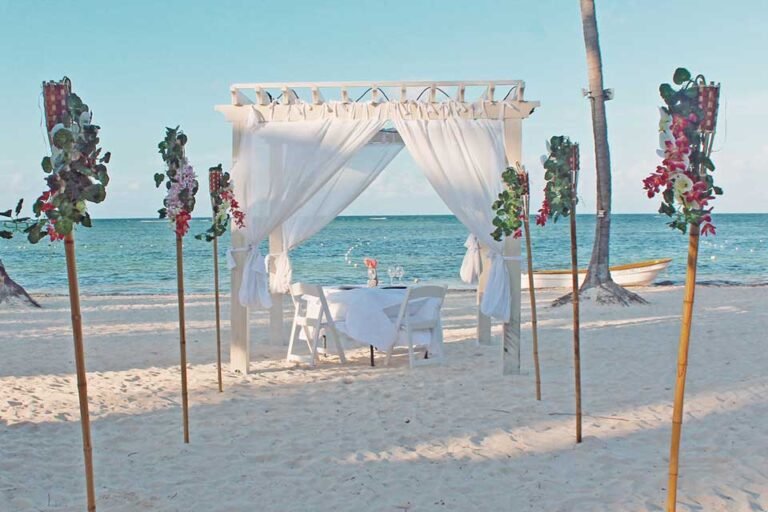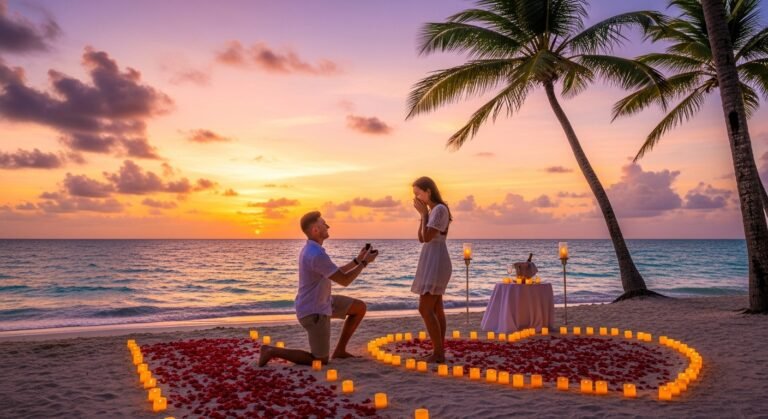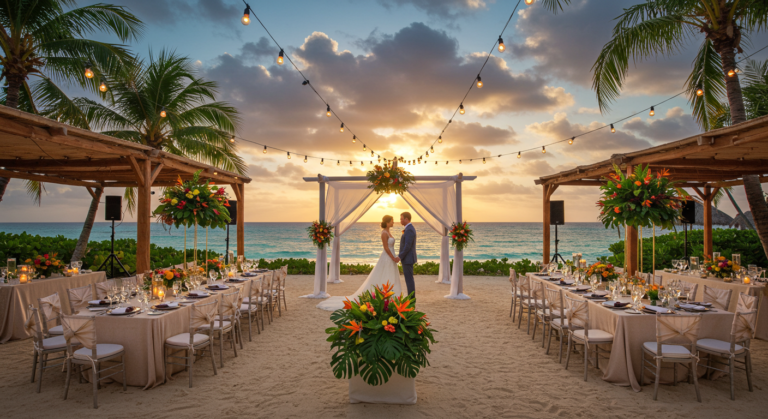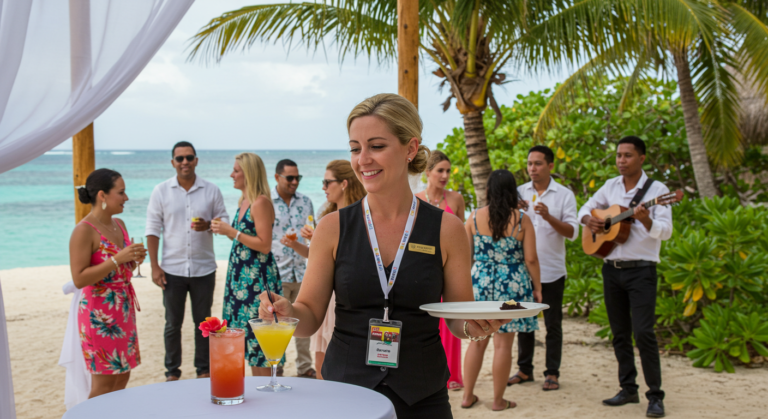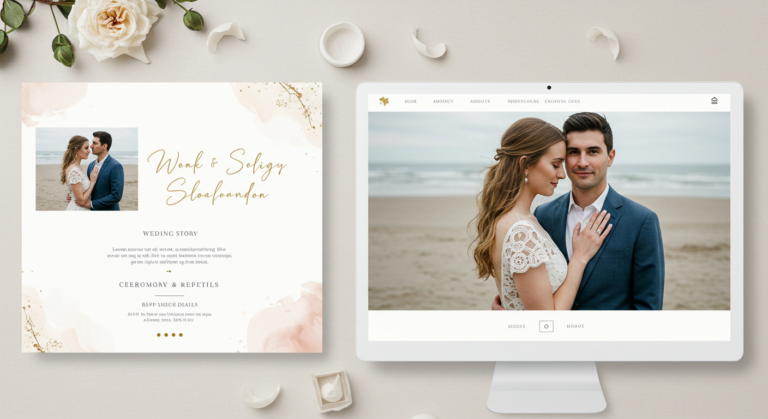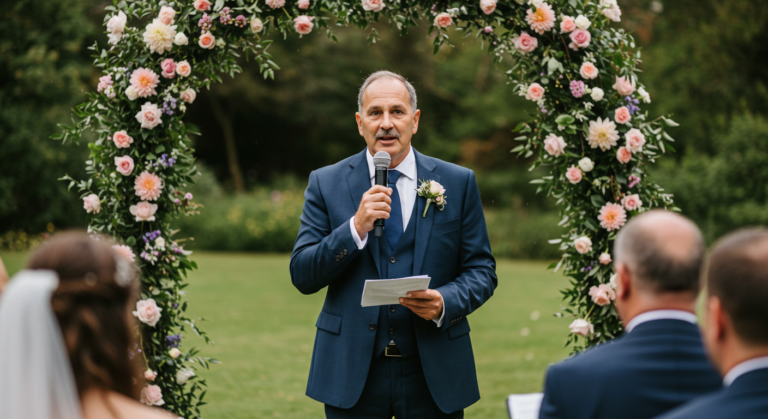Creating a Wedding Mood Board: Tips for Defining Your Style
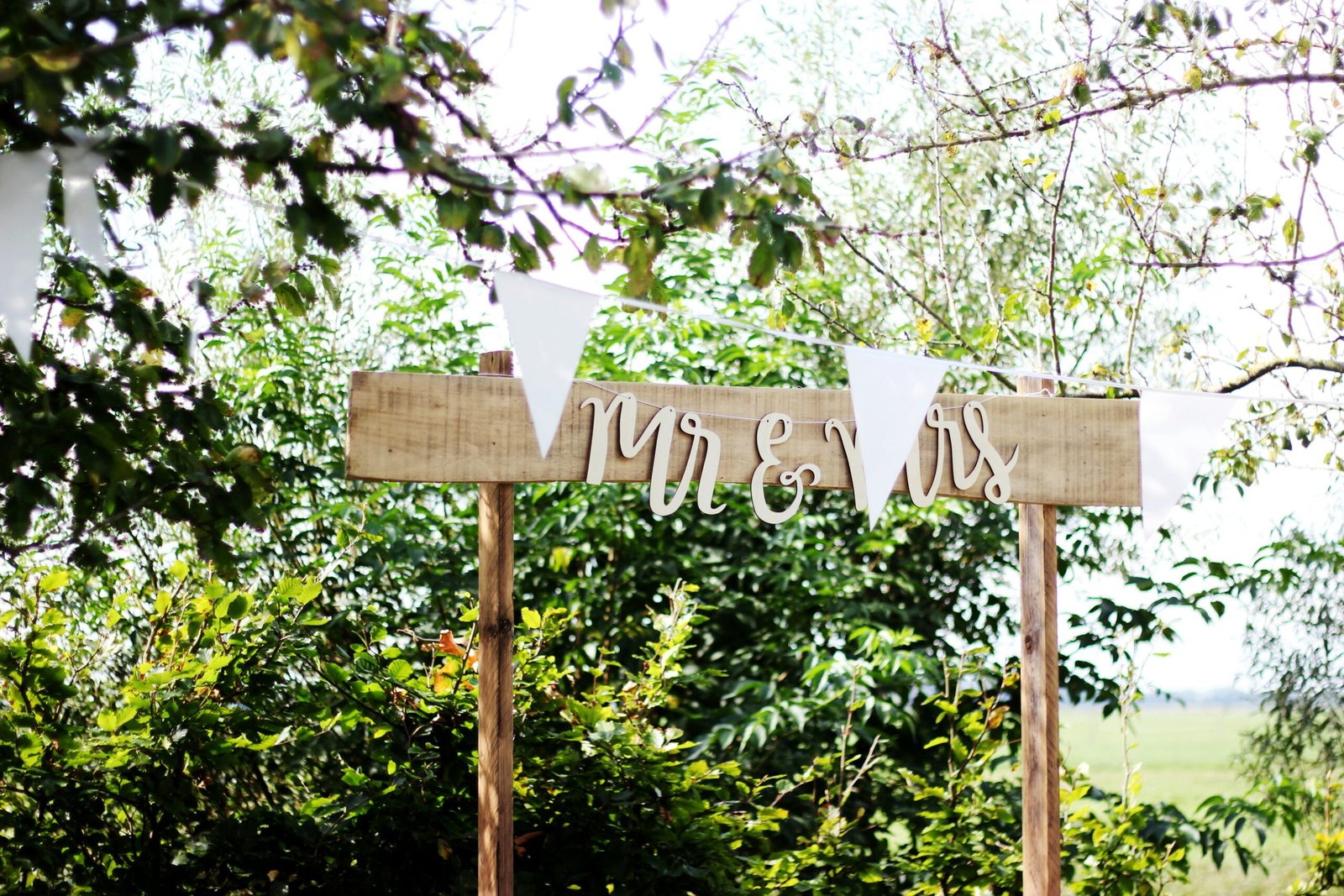
Introduction to Wedding Mood Boards
A wedding mood board serves as a visual representation of the various elements that define a couple’s unique style and theme for their upcoming nuptials. This creative tool is instrumental in the wedding planning process, offering couples a clear and cohesive way to express their vision to wedding planners, vendors, and even family members. By compiling images, colors, textures, and typography, a mood board assists couples in visualizing the overall aesthetic they desire for their wedding day.
The significance of a wedding mood board lies in its ability to guide decision-making throughout the planning process. With countless details to consider, from floral arrangements to venue decor, having a mood board helps narrow down choices and maintain consistency. Couples can easily explore and refine their ideas by illustrating their preferences, ultimately leading to a more harmonious and personalized wedding experience.
Furthermore, mood boards can be an effective communication tool. When couples share their boards with wedding planners and vendors, it becomes easier to convey their expectations and desires, ensuring all parties are aligned. This proactive approach can prevent misinterpretations, saving time and effort while fostering a collaborative atmosphere. Overall, a wedding mood board is a vital resource that enriches the planning journey, making it not only more manageable but also more enjoyable.
Incorporating various elements into your mood board allows for creative exploration. By utilizing different styles, themes, and colors, couples can identify what resonates with them, ultimately leading to a thoughtful and intentional design for their special day. Therefore, understanding how to effectively create a wedding mood board is an important step toward realizing a couple’s dream wedding.
Why a Mood Board is Essential for Wedding Planning
Creating a wedding mood board is an invaluable step in the wedding planning process. It serves as a visual representation of your desired aesthetic, encapsulating the various elements that reflect your personal style and vision for the special day. The importance of a mood board in this context cannot be overstated; it aids in crucial decision-making throughout the planning journey. By consolidating your ideas and inspirations into one cohesive visual layout, a mood board allows you to easily identify what resonates with your style and what does not.
One of the primary advantages of employing a mood board is its ability to set a clear aesthetic direction. With a wide array of themes, colors, and design trends available, having a carefully curated board helps to narrow down choices, minimizing the overwhelming nature often associated with wedding planning. This focused approach ensures that all elements—be it floral arrangements, color schemes, or decor—align harmoniously, creating a cohesive look for your wedding.
Moreover, a mood board enhances effective communication with your wedding planner and vendors. It acts as a visual guide that conveys your preferences and expectations, leaving little room for misinterpretations. Vendors can better understand your vision and contribute their expertise to bring your ideas to life. By presenting a mood board during consultations, you establish a shared understanding that facilitates collaboration and ensures that the final outcome aligns closely with your dreams.
Ultimately, incorporating a mood board into your wedding planning not only simplifies complex decisions but also enriches the entire experience. It becomes a central tool that captures the essence of your celebration, guiding you toward the perfect choices that reflect your unique style.
Gathering Inspiration: Sources and Ideas
Creating a wedding mood board fundamentally begins with the collection of diverse inspirations that reflect your personal style. One of the most effective and popular platforms to gather ideas today is Pinterest. This visual discovery tool allows you to browse countless images and style guides, helping you curate a collection of visuals that resonate with your desires for your special day. You can create boards that categorize different elements, such as color palettes, floral arrangements, and decor themes, streamlining your planning process.
Another online resource is Instagram, where you can follow various wedding planners, florists, and venues. Utilizing hashtags pertinent to wedding themes, such as #WeddingInspiration or #BohoWedding, can yield a plethora of ideas that can spark creativity. Furthermore, Instagram stories and reels often showcase unique weddings, adding an element of real-life inspiration that can greatly enhance your mood board.
Beyond digital sources, traditional wedding magazines still offer an invaluable wealth of inspiration. Publications in print present high-quality images and detailed descriptions of real weddings, as well as expert advice on current trends and timeless styles. Additionally, reading wedding blogs can reveal unique themes and DIY suggestions that may not be found on mainstream platforms, further diversifying your influences.
Do not underestimate the value of nature as your inspiration source. A simple walk in a garden, park, or even at the beach can help you appreciate color combinations and textures that you may wish to incorporate into your wedding design. Observing the aesthetic in nature—be it the vivid hues of flowers or the serene blues of a sunset—can offer organic inspiration that feels authentic to you. By gathering ideas from a mix of both online and traditional sources, you can create a well-rounded mood board that genuinely reflects your vision for your wedding day.
Choosing a Color Palette
Selecting a color palette for your wedding is a crucial step in the planning process, as it sets the tone and ambiance for the entire celebration. Understanding basic color theory can greatly aid in this endeavor. The color wheel, which consists of primary, secondary, and tertiary colors, serves as a foundation for choosing a harmonious palette. You can combine colors in various ways: analogous colors, which sit next to each other on the wheel, provide a serene look, while complementary colors, which are opposite each other, create striking contrast and vibrancy.
Additionally, it is vital to consider the emotional impact that colors convey. For instance, soft pastels are often associated with romance and tranquility, making them suitable for spring weddings. In contrast, deep jewel tones evoke a sense of warmth and richness, and might work well for a winter celebration. By understanding these emotional associations, couples can select a color palette that resonates with their vision and emotional tone for the event.
When choosing colors that complement one another, consider both color harmony and the overall aesthetics of your wedding. A two or three-color scheme tends to be effective, helping to maintain a cohesive visual narrative throughout your flowers, décor, and attire. Additionally, it is essential to factor in the wedding season; earthy tones are often ideal for autumn, while vibrant hues reflect the energy of summer. By carefully narrowing down your options and seeking inspiration from various sources such as nature, art, or personal experiences, you can create a color palette that truly defines your style and reflects your unique personalities as a couple.
Defining Your Wedding Style: Themes and Aesthetics
Choosing the right wedding style is integral to ensuring that your special day reflects your unique personality and vision. There are numerous themes available, each evoking different moods and atmospheres. Common styles include rustic, modern, vintage, bohemian, and classic, among others. Identifying which theme resonates with you and your partner is the first step towards creating a cohesive look for your wedding.
Begin by reflecting on your personal tastes and interests. Consider the aspects of your relationship that you value most and how they can influence your wedding aesthetics. For instance, if you both appreciate nature and the outdoors, a rustic theme featuring wood accents, greenery, and natural elements could be a perfect match. Conversely, if you are drawn to sleek lines and contemporary designs, a modern wedding style featuring minimalistic décor and monochromatic color schemes may align better with your vision.
Moreover, think about the overall feeling you wish to evoke throughout your wedding celebration. Should it feel intimate and cozy, or grand and lavish? Discussing these emotional elements with your partner can help narrow down your options. Don’t forget to examine how different colors, textures, and decorative elements contribute to the overall aesthetic. For example, a vintage wedding often utilizes soft pastels, lace, and antique decor, while a bohemian style may incorporate vibrant colors, eclectic patterns, and free-spirited touches.
As you explore various styles, gather inspiration from bridal magazines, websites, and social media platforms like Pinterest and Instagram. Creating a visual representation of your ideas can further clarify your vision. By taking inventory of your reflections, preferences, and aspirations, you can successfully define a wedding style that authentically embodies you and your partner, making your celebration truly special.
Compiling Visual Elements: Textures, Images, and Patterns
Creating a wedding mood board is an essential step in defining the overall style and aesthetic of the celebration. A well-crafted mood board not only encapsulates the couple’s vision but also serves as a visual guide for vendors involved in the planning process. To achieve a coherent and captivating aesthetic, it is necessary to compile various visual elements, including textures, images, and patterns that complement the chosen theme.
When selecting textures, consider materials that evoke the desired feeling and ambiance. For example, if a rustic theme is preferred, elements such as burlap, lace, or weathered wood can be incorporated into the mood board. Alternatively, for a more elegant affair, luxurious fabrics like silk or satin may be more appropriate. By combining textures, you create depth in your visual narrative, allowing different elements to work harmoniously together and reinforce the overarching concept.
Images play a crucial role in the mood board, as they convey a tone and style that words often cannot. Start by gathering photographs of color palettes, floral arrangements, venue settings, and table layouts that resonate with your vision. It is also beneficial to include images that reflect the desired atmosphere, whether it’s romantic, whimsical, or modern. By curating a collection of relevant images, you establish a visual reference that reflects both the couple’s style and the wedding’s intended mood.
Patterns can further enhance the mood board by introducing shapes and designs that tie different elements together. Consider using patterns for invitations, table linens, and even floral arrangements. Stripes, polka dots, or floral prints can serve as inspiration and help in creating a unified visual language throughout the wedding décor. Ultimately, the key to a successful mood board lies in the thoughtful integration of textures, images, and patterns, ensuring they align with your overall vision for the wedding. This attention to detail will enhance the aesthetic and provide a clear direction as you move forward in your planning journey.
Utilizing Digital Tools for Mood Board Creation
In today’s digital age, creating a wedding mood board has become an accessible and enjoyable process, thanks to various tools available online. Among the plethora of digital solutions, Canva and Adobe Spark have emerged as popular choices, offering users intuitive interfaces and a multitude of templates that cater to different aesthetics and themes. These platforms enable users to easily drag and drop images, colors, and text, allowing for a seamless creation experience. Furthermore, many users appreciate the flexibility that these tools provide, as they can work from anywhere, whether on a desktop or mobile device.
Canva, for instance, offers a broad selection of ready-made templates specifically designed for mood boards. Users can customize these templates by adding their own images or selecting from Canva’s extensive library, which includes photos, illustrations, and design elements. This versatility makes it easy for couples to visualize their wedding themes, colors, and overall style. Additionally, Canva’s collaboration features allow multiple users to contribute to the mood board, making it an ideal choice for engaged couples who want to involve friends or family in the planning process.
Adobe Spark functions similarly by providing users with the tools to create stunning visuals quickly. This software also offers a range of templates tailored for mood boards and allows easy editing to fit the user’s unique style. Spark’s integration with other Adobe products enriches its functionality, giving more seasoned designers additional creative options. For mobile users, applications such as Pinterest prove invaluable, as they allow for seamless collection and organization of inspiration from various sources. Users can create boards that encapsulate their vision by pinning images, links, and notes.
Overall, utilizing these digital tools can streamline the mood board creation process, transforming potentially overwhelming planning into an organized and enjoyable experience. As couples embark on their wedding journey, leveraging technology can enhance their creative expression and help define their unique style effectively.
Finalizing Your Mood Board: Submission and Feedback
Once the initial mood board has been assembled, the next crucial step involves presenting it to trusted individuals, such as family members, close friends, or a wedding planner, to gather insightful feedback. This collaborative approach not only reinforces your vision but also invites fresh perspectives that may enhance the overall design. Before sharing, ensure that the mood board is clear and comprehensible, employing a clean layout that illustrates the chosen color palette, themes, textures, and key elements that resonate with the couple’s style.
When submitting the mood board for review, consider organizing a dedicated meeting, either in-person or virtually. This allows for a more interactive discussion, where you can explain your inspirations and artistic choices. Encourage constructive criticism by asking specific questions to guide the feedback. For instance, focus on whether the color combinations are visually appealing or if the elements chosen align with the proposed theme of the wedding.
After receiving feedback, it’s essential to evaluate which suggestions align with your wedding vision and enhance the mood board’s overall aesthetic. This may involve making adjustments to certain elements, such as altering a color shade or incorporating different fabric swatches. While adapting based on feedback, it is vital to stay true to the couple’s original vision, ensuring that any changes still capture the essence of what was initially intended.
Once revisions have been made, consider seeking a second round of feedback to confirm that the enhancements resonate positively with your audience. This iterative process helps to ensure that the final mood board reflects a collective vision, seamlessly integrating personal preferences with creative input. Following this thorough approach to feedback, you will culminate in a well-defined mood board that sets a solid foundation for your wedding planning journey.
Next Steps: Bringing Your Mood Board to Life
Having created a compelling wedding mood board, the next step is transforming this visual representation into actionable decisions for your wedding planning. The mood board serves as a guiding framework that encapsulates your desired aesthetics and atmosphere, enabling you to approach the organizational aspects with clarity and focus. The first key area to address is venue selection.
Your mood board should reflect the type of ambiance you envision for your wedding. Elements showcased, such as color palettes and styles, can inform whether you gravitate towards a rustic barn, an elegant ballroom, or a charming garden. When exploring potential venues, scrutinize how each space aligns with the mood board’s elements. This will ensure that your chosen setting aligns perfectly with the style you aspire to create.
Next, utilize your mood board as a reference for decor choices. The board provides insight into the types of decor that resonate with your vision, including floral arrangements, table settings, and lighting. By adhering to the styles and colors found in your mood board, you can develop a cohesive look that enhances the overall aesthetic of your wedding.
Attire is another crucial element aligned with your mood board. Each bridal gown or suit should reflect the style you aim to achieve. Incorporate details from your board, such as specific fabrics or colors, to inform your selections. Ensuring that your wedding attire complements the overall theme contributes significantly to the visual harmony of the event.
Lastly, the vendor selection process is pivotal. Whether it’s florists, caterers, or photographers, conveying your mood board to these professionals can facilitate their understanding of your desired vibe. Share the imagery and symbols that resonate from your board, aiding them in designing services that authentically reflect your wedding style. By thoughtfully leveraging your mood board throughout these planning stages, you will ultimately create a cohesive and memorable celebration that aligns perfectly with your initial vision.
